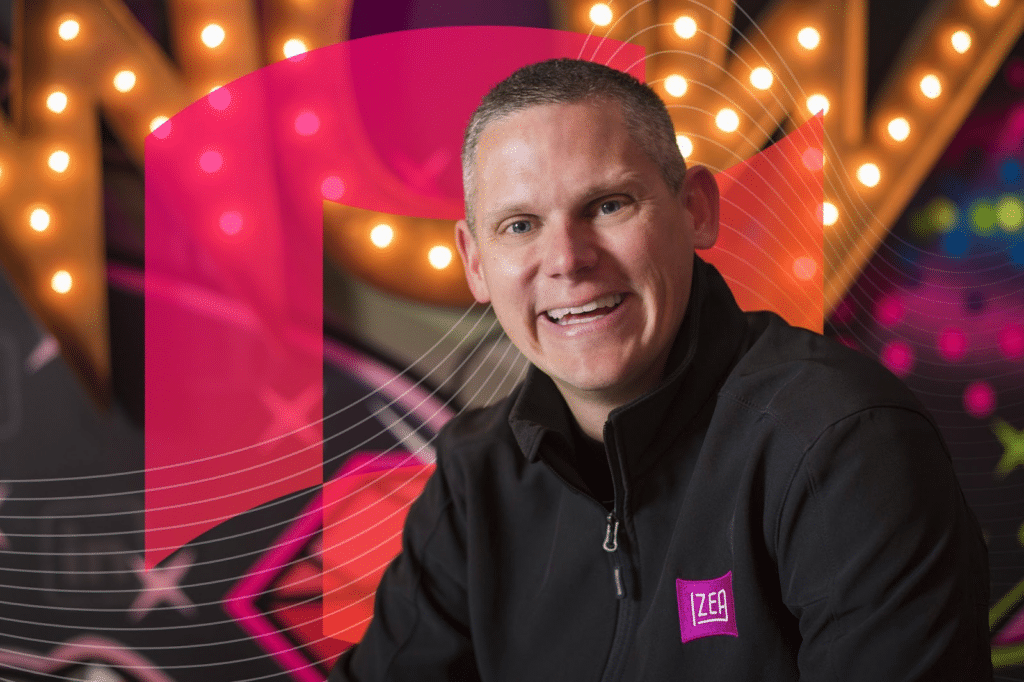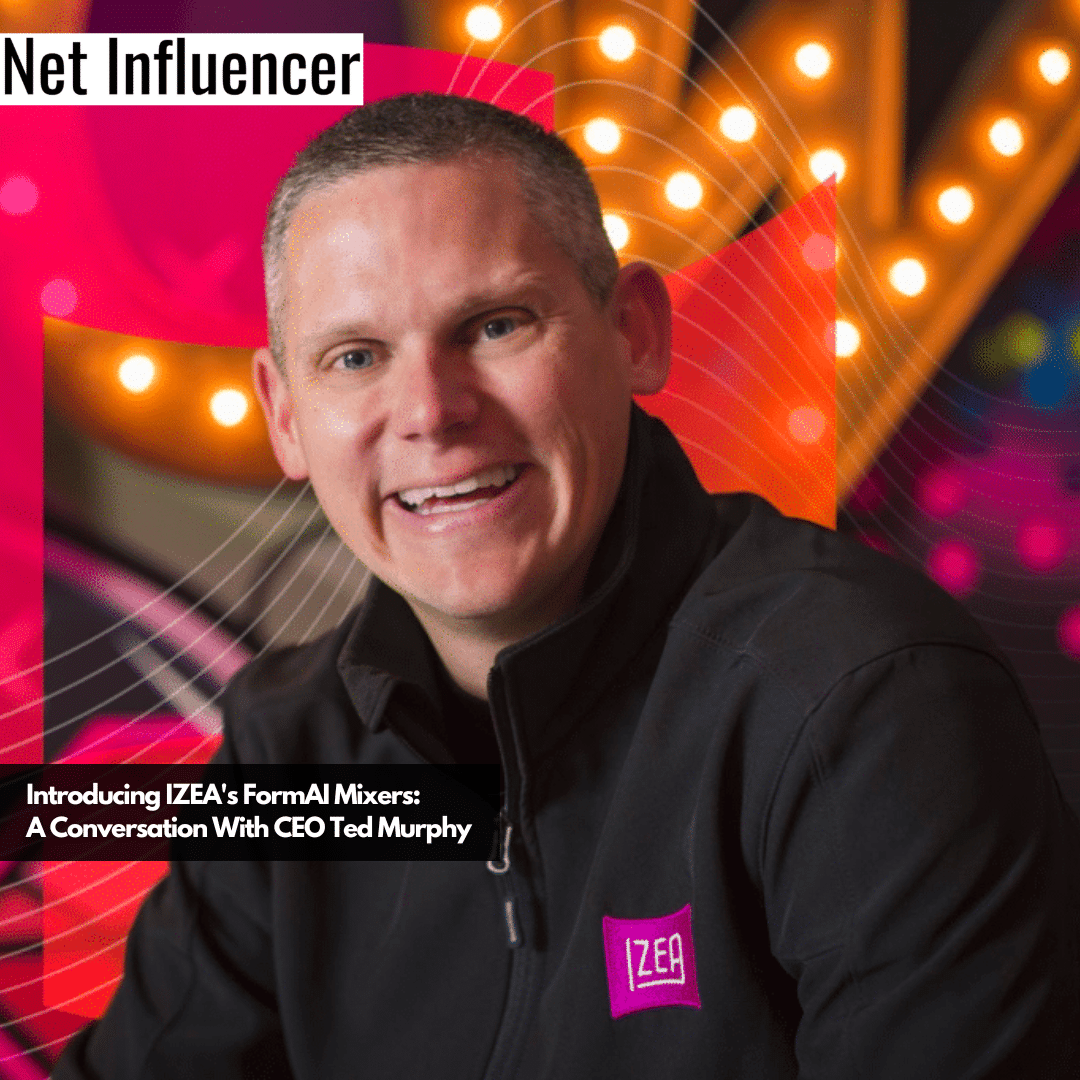Agency
A Conversation With CEO Ted Murphy: Introducing IZEA’s FormAI Mixers

Last Wednesday, at Creator Economy Live in Las Vegas, IZEA announced the launch of its new feature; FormAI Mixers.
Ted Murphy, Founder and CEO of IZEA, sheds light on this new feature. “We are now giving people the opportunity to train an AI model of a face, an object, or an art style,” he explains.
The essence of Mixers lies in its simplicity and accessibility, as Murphy explains: “It’s super easy for people to do. They just add their images, create a name for the mixer, and it takes about 20 minutes to train a model.” This user-friendly approach is central to IZEA’s mission of making advanced digital tools accessible to a broader range of creators.
Murphy emphasizes the cost-effective nature of these Mixers. “In our system, everything operates through credits,” he explains. For 1000 credits, users can start creating. Given that a basic creator plan with a pro account provides 5000 credits, the opportunity to experiment with this technology is within easy reach of many.
However, Murphy is transparent about the current state of the technology. “This is not necessarily designed today for what we call direct application,” he states, acknowledging the limitations in creating photorealistic representations. He points out that while the technology is not perfect at understanding all features accurately, it’s a significant step towards more advanced applications in the future. “We’re not there yet, but this provides the framework for the future. As the technology improves, everything will already be built.”
Introducing IZEA’s FormAI Mixers: A Conversation With CEO Ted Murphy
The Essence and Inspiration of IZEA’s Mixers
“The core concept of Mixers is that we aim to reach a point where a brand can train an AI model on their product, logo, or a virtual product,” Murphy explains. This vision extends to the entertainment industry, where he sees potential for brands to create virtual models of characters for influencers to interact with. The goal is to streamline the collaboration process between brands and creators, fostering a more dynamic and integrated approach to digital marketing and content creation.
The potential for brand and creator collaboration is a significant aspect of Mixers. “You can see how brands and creators could use this together,” Murphy says, suggesting scenarios like influencers posing with virtual products or characters. “The process works by training the model and then sharing it within our system. Anyone on the team can then collaborate with the image.”
Overcoming Challenges in Developing Mixers
“We’re still working through the main challenges,” Murphy begins, acknowledging the ongoing nature of the development process. He emphasizes the importance of collaboration in this endeavor, mentioning IZEA’s partnerships with companies like Stability and OpenAI. By leveraging a variety of technologies, IZEA aims to refine and enhance the capabilities of Mixers.
“We acknowledge that the images and outputs are not perfect yet,” Murphy says, setting realistic expectations. However, he remains confident in the progress and potential of the technology. “Considering how far things have come even in the past year, we’re pretty confident that we will achieve our goals,” he asserts.
Murphy also highlights a unique application of this technology in the entertainment industry, specifically with intellectual properties (IP) that are fictional. “Think about using it with intellectual properties (IP) that aren’t real, like Godzilla,” he suggests. This application opens up new avenues for promoting movies or other entertainment products using virtual models. “We could pair an influencer with a trained model of Godzilla to promote a movie,” he explains, demonstrating how Mixers can create realistic interactions with fictional characters.
Enhancing Creativity in Influencer Marketing
“We believe that Mixers open up a myriad of new creative avenues,” Murphy says, encouraging experimentation and rapid ideation.
“Mixers will inspire people to try things they may not have considered before because they can do it quickly and easily determine success or failure,” he explains. He illustrates this with a practical example: “For instance, they might realize they like the look of snow in the background of an image, so they decide to shoot on a snowy day.” Such flexibility in testing and visualizing ideas before execution can lead to more refined and targeted content, enhancing the overall quality of influencer marketing campaigns.
“It’s not just about the creator or the brand sharing a model, but a collaborative sharing. An agency or brand representative can combine their model with the creator’s model and develop new ideas,” Murphy explains. “This level of collaboration wasn’t possible before.”
Recognizing the transformative potential of this collaboration, Murphy then shifts focus to the broader strategic goals of IZEA, emphasizing how Mixers not only revolutionizes individual projects but also plays a pivotal role in the overarching vision of the company: “Mixers is a foundational tool that aligns with our vision of generative sponsorships in the creator economy,” Murphy states, “At this moment, we see FormAI Mixers primarily as a tool to facilitate the very early stages of generative sponsorships between brands and creators.”
Long-Term Impact on Influencer Marketing
“When we step back and look at the changes in our space over the past two decades, we see that the price of influencer sponsorships has continually risen, growing almost 100 times in the first decade since we started,” Murphy notes. This significant increase in sponsorship costs highlights the growing value and influence of digital content creators in marketing strategies.
However, Murphy foresees a stabilization in sponsorship pricing. “There will come a point where these prices start to stabilize,” he predicts. In this evolving landscape, Mixers are poised to play a crucial role. According to Murphy, the efficiency of content production is a key factor in this stabilization process. Mixers, by design, is intended to streamline the creative process for both brands and creators, making the production of sponsored content more cost-effective and creative.
Murphy also emphasizes the role of Mixers in enhancing the creative aspects of marketing and advertising. “Recognizing that sponsorships are essentially paid advertising and marketing, which is a creative process, the more tools we can provide to both creators and brands, the more efficient they become,” he explains.
Murphy believes that by equipping creators and brands with innovative tools like Mixers, the cost of production can be lowered while simultaneously increasing the creativity and quality of the content produced. “This efficiency allows for quicker production of high-quality content, adding value to both creators and brands in the influencer marketing industry,” he concludes.
Ted Murphy Reflects on the Excitement Around the Launch of Mixers
“What excites me the most is the rapid evolution of technology,” Murphy says. IZEA’s reliance on various types of open-source technology from different providers has allowed it to stay at the forefront of innovation. He marvels at the advancements made in just a short period, “Seeing what these systems are capable of now compared to just six months ago is truly astounding.”
Looking ahead, Murphy sees immense potential, particularly in video technology. “Thinking about the capabilities that will be available in the next five to six months, or even a year from now, especially in terms of video, opens up many avenues for creators and marketers,” he notes. This anticipation is not just about the technological advancements but also about the creative possibilities these advancements will unlock for creators and marketers.
Alongside the excitement, Murphy acknowledges the ethical considerations and questions that arise with AI-generated content. The issue of authenticity and the need for disclosure in AI-generated content are at the forefront of these discussions. “For instance, if an image is photorealistic, like someone holding a bottle of alcohol or a can of Coke, should it be disclosed as AI-created?” he asks, highlighting the grey areas in AI content creation. “These are crucial discussions to have in the early days of this technology and the types of questions creators and marketers will have, and we are in the early stages of developing frameworks around these issues,” he says.
Murphy’s vision for Mixers extends beyond mere technological fascination; it encompasses a commitment to responsibly shaping the future of AI in content creation. As IZEA stands at the forefront of this evolution, Murphy’s insights underscore the importance of balancing innovation with ethical considerations, ensuring that the journey into the future of the creator economy is as conscientious as it is groundbreaking.





















